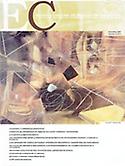Main Article Content
Dec 2, 2024
Abstract
One of difficulties that the teaching and the leaming of chemistry present in the first year of university courses is due, partly, to the diversity of students, who show different interests, and previous abilities and knowledge, (Kovacs, 1999). The teaching strategies that frequently are used so much in the classroom as in the experimental activities, their majority, do not consider the leaming needs of the students, generating a problem in the leaming of the concepts and principies of the chemistry, which means that a great number of students reprobates the signature. A possibility of improving the learning of chemistry, remembering the necessities of leaming of the students, is by means of the incorporation of significant and motivating
experimental activities, for which practices of laboratory were designed and contextualized, supported with adapted virtual ambient guides of leaming and incorporating for the intervention modality. The didactic proposal contemplated two groups of students, experimental group to whom it was applied to the strategy and the group to him control. When the results
obtained in both groups are compared it observed significant differences in favor of the experimental group, which is evidenced in the final qualifications of the laboratory.
References
Barberá, E. La educación en la red. Actividades virtuales de enseñanza y aprendizaje. Editorial Paidós. Pág. 29. 2004.
Bello, L. La enseñanza de la química general y su vínculo con la sociedad. Educación Química.11, [4], 374-380, 2000.
Escalona, M. Los ordenadores en el proceso de enseñanza-aprendizaje de las ciencias. Fundamentos para su utilización, Revista Iberoamericana de Educación, 36, [1] p. 25, 2005.
Flores Ochoa, R. Hacia una pedagogía del conocimiento. Ed. McGraw Hill, p.75-106, 1999.
Herrera, M.A.Las nuevas tecnologías en el aprendizaje constructivo. Revista Iberoamericana de Educación. 34 [4] 2004.
http://www.rieoei.org/deloslectores/ 821Herrera.PDF
Kovacs, J.; Sherwood, D. “Writing in Chemistry: An Effective Leaming Tool”, J.Chem.Educ. 76, 1399-1403, 1999.
Lazo, L., León, G., Villalobos, C. y Romero, A. Mejoramiento del aprendizaje en la asignatura Principios de Química, mediante un sistema semipresencial. Journal o f Science Education, 7 [1], p. 56-58, 2006.
Martínez-Jiménez, P.; Pontes-Pedrajas, A.; Climent-Bellido, M. S.; Polo, J. Leaming in Chemistry with Virtual Laboratories 7. Chem. Educ. 80 p. 346, 2003.
Montes, Luis D.: Rockley, Mark G Teacher Perceptions in the Selection o f Experiments J. Chem. Educ. 79 244, 2002.
Oliver-Hoyo, María T.; Alien, DeeDee Attitudinal Effects o f a Student-Centered Active Learning Environment J. Chem. Educ. 82, 944, 2005
Sánchez I. T. La construcción del aprendizaje en el aula. Ed. Magisterio Río de la Plata, p. 34, 1995.


